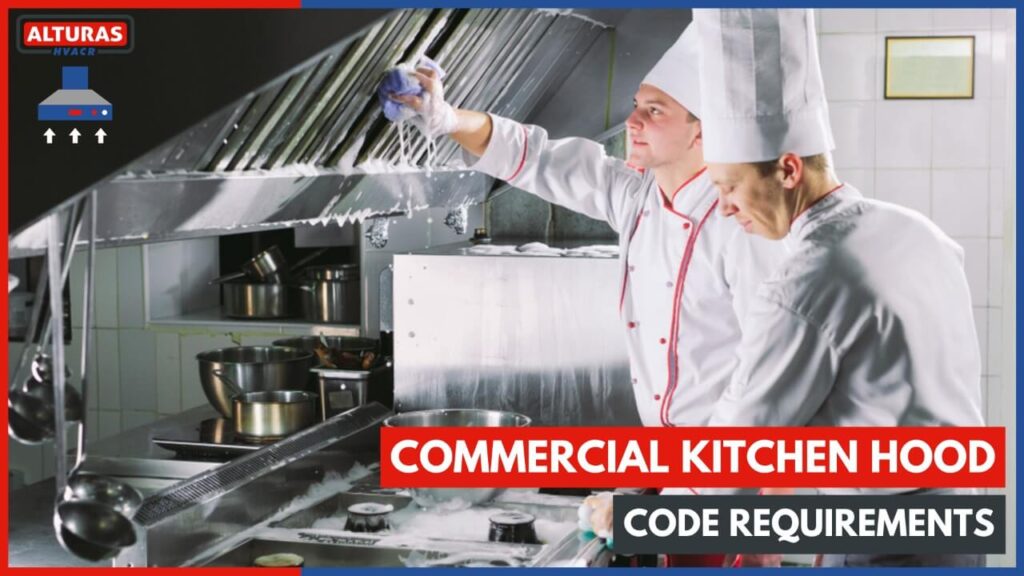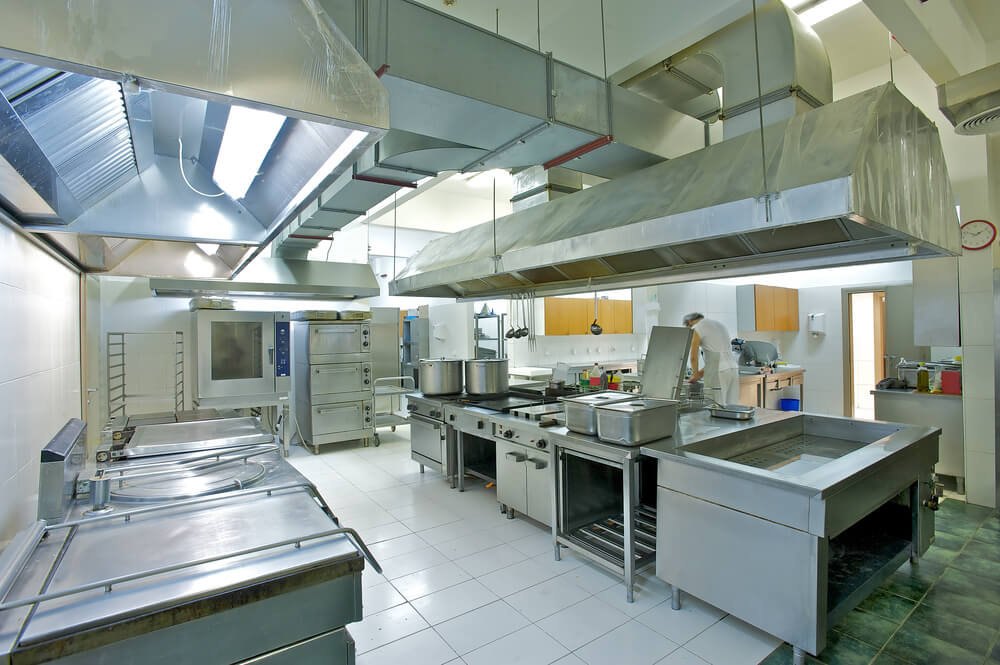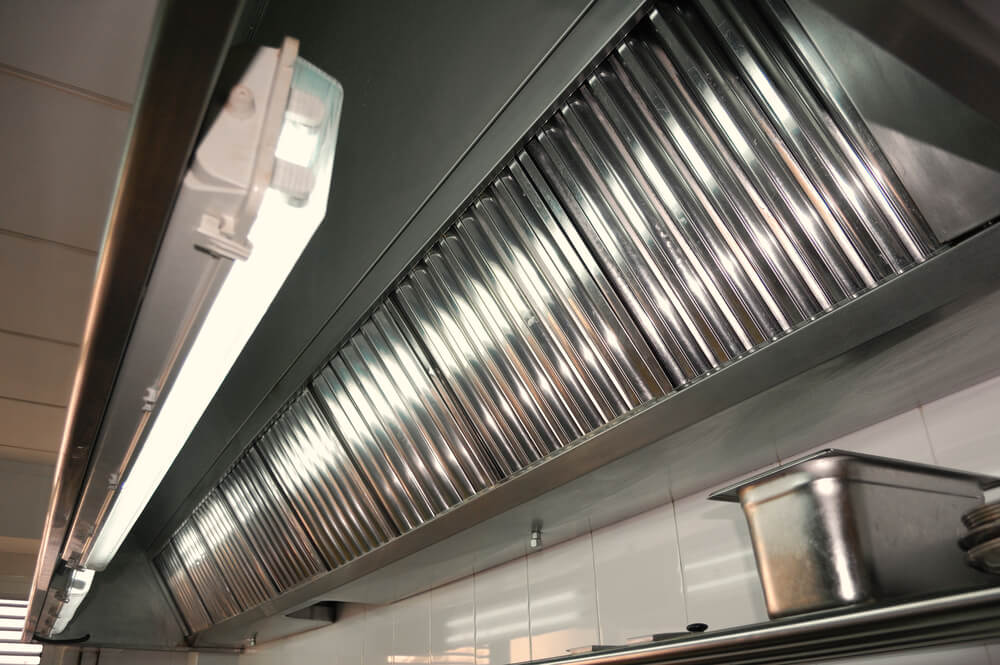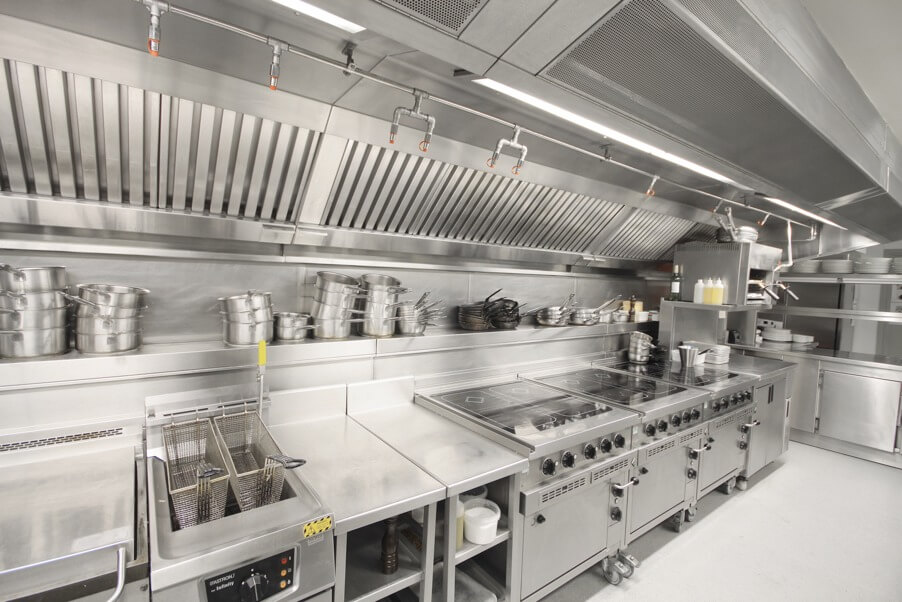

As we know there are a lot of activities that are going on inside any busy commercial kitchen, half a dozen hot stovetops cooking food to be served to perfection, a lot of people chopping and handling ingredients for any number of dishes on the menu and orders served up quickly and efficiently. Mistakes can affect the health and safety of employees and patrons alike can be made at any step, this is the reason that standards and codes exist for nearly everything inside a commercial kitchen.
All of the appliances have their share of codes and regulations that have to be followed. Let us see the commercial kitchen hood code requirements in this article.
All those large stove hoods humming away in the kitchen background may seem like overkill, but they have an impact on the overall environment of the kitchen itself. Nobody would want to work in a smoky, hot, greasy kitchen.
Also, no one would want to dine at a restaurant where those smoky and greasy odors overpower the smell of the food. Commercial kitchen hood code requirements would always make sure that the kitchen maintains its air quality and temperature, and that flammable grease is removed from the environment. This all makes the kitchen a safer place to work and be in.
No matter what sort of kitchen you are working in, whether you are looking to rent a commercial kitchen or you are going to start a commercial kitchen, you must be aware of the specific requirements they must meet at any cost for everyone’s safety.
Some of these requirements may vary from location to location, so you must be sure to check your local guidelines for requirements as well.
Generally speaking, the most basic requirements would include the following pointers:

Every kitchen has to abide by several rules and regulations, as well as codes to operate in a proper way and even legally. When we talk about kitchen hoods, these regulations are very important for preventing hazards and maintaining air quality in a commercial setting.
Below we will see what a kitchen hood code requirement is and how they work so that you can follow them to create a safe workplace for everyone.
Type I hoods are also known as grease hoods, Type I hoods are designed in such a way that they remove heat, smoke, and airborne grease. These kinds of hoods are often found over appliances such as fryers, broilers, grills, and ovens. Because of the significant differences between Type I and Type II hoods, each of them has its own unique set of rules and regulations. As the Type I hoods collect flammable materials, they should be constructed, designed, and laid out, especially in your kitchen.
Below, we will see some of the Commercial Kitchen Hood Code Requirements for Type I hoods:
You must install your hood at least 18 inches away from combustibles.
Any hood that is in the kitchen must be made of steel with a minimum thickness of 0.0466 inches or stainless steel with a minimum thickness of 0.0335 inches.
Each of these hoods should have a label indicating the minimum exhaust flow rate in CFM (cubic feet per minute) per linear foot.
Always try and make sure that each hood is secured in place by noncombustible materials.
Any of the external joints, seams, and penetrations must be made from continuous external liquid-tight weld or braze to the lowest outermost perimeter of the hood.
Internal joints are never required to be welded or brazed but should be sealed properly so that grease cannot escape in any way.
Type II hoods are also called condensate hoods, Type II hoods work in a way that they help in removing steam, vapor, and other moisture from the air. Some Type II hoods even help in removing odors. They are often found on top of coffee machines, commercial dishwashers, and certain pizza ovens.
Also, these types of hoods often lack a grease filter, so they should never be used interchangeably with Type I hoods. As these Type II hoods help in removing condensation and odors from the air, they are not required to follow the same code requirements as Type I hoods have to follow. Nevertheless, they can fulfil an important function in the kitchen and must be constructed properly.
Make sure to follow the Commercial Kitchen Hood Code Requirements as you prepare your Type II hood:
These types of hood supports should be able to hold the load of the hood, unsupported ductwork, effluent load, and possible weight of any personnel working on the hood.
Joints, seams, and penetrations for Type II hoods should be sealed on the interior of the hood. The interior should provide a smooth surface that is easily cleanable and watertight.
Type II hoods should be constructed from steel with a minimum thickness of 0.0296 inches, stainless steel with a minimum thickness of 0.0220 inches, and copper sheets weighing at least 24 oz. per square foot.
Hood height is an important part of Commercial Kitchen Hood Code Requirements. Different areas might have different range hood height code requirements. As per the height of the range, it would be best practice that the hood must be hung so that the bottom of the hood is 6’6″ from the finished floor unless otherwise specified by local authorities.

Exhaust hoods are flexible and indispensable appliances for all commercial kitchens. Day-to-day food preparation functions are unthinkable without any assistance from a proper exhaust hood and ventilation system. So it would be logical for commercial kitchen operators to put a good deal of thought into exhaust hood purchasing options. Exhaust hoods should not only conform to national and state codes, but they also must meet their specific building specifications.
Here is an explanation of some common exhaust hood specifications that you would have to follow:
According to Chapter 15, Section M1503 of the International Residential Code (IRC) contains regulations regarding ventilation in the kitchen as well as the design and installation of range hoods. Sufficient ventilation can be provided by a window that opens to the outside. Even though the range hoods are not compulsory as per IRC, still they must be used.
Never forget that untrained kitchen staff can lead to many serious injuries. NFPA requires that kitchen staff and employees be trained on the use of portable fire extinguishers and the manual actuation of the fire extinguishing system. It is the duty of the management to provide instruction to all employees on an annual basis. All these regular instructions will reduce the likelihood of inappropriate responses by the kitchen staff.
Also, cleanliness is a serious issue in many kitchens. NFPA also reports that 1 in every 5 kitchen fires had failure to clean as a factor contributing to its ignition. Regular and proper cleaning of grease build-up and other debris is necessary for the proper operation of fire suppression systems. The frequency of inspection for grease buildup is totally based on the type or volume of cooking. Another fire safety issue is simply moving kitchen equipment around without regard to fire safety. Fire suppression equipment is cleverly installed based on the layout of the kitchen and the hazards for which they are meant to protect.

Regularly cleaning and maintaining your kitchen exhaust system will always help you to reduce the risk of fires, equipment shutdowns, and all other possible emergencies. To make it happen you can easily clean your system and choose a hood system design that is easily accessible for maintenance and cleaning by following these code requirements:
Your kitchen hood must be designed in such a way that it would allow thorough cleaning of the whole hood system.
For the purpose of avoiding leakage and to make sure that cleaning is easy, make sure that any joints and seams are tightly sealed.
Provide proper grease troughs and drip pans to catch any leftover grease and easily dispose of it.
Always make sure that grease gutters drain to an approved collection receptacle that is also regularly cleaned.
Grease ducts should only have openings where they are required for operation and maintenance and no otherwise.
Openings should be equipped with tight-fitting doors as thick as the hood duct and sealing materials shall be rated for not less than 1500 degrees Fahrenheit
To guarantee safety, compliance, and effective operation, regular inspections of commercial kitchen hoods are required. In most cases, inspectors will look at a number of different things.
The electrical specifications for kitchen hoods are critical for the proper functioning of commercial kitchens. Several crucial factors are included in these prerequisites.
Below, we’ve compiled some of the common questions asked about commercial kitchen hood code requirements and how they apply to different appliances in your kitchen. Call Alturas Contractors for queries related to Commercial Kitchen hood installation.
Type 1 hoods are designed to be used with appliances that produce greasy by-products and smoke created while cooking. Type 2 Hoods focus on other types of kitchen appliances and equipment that don’t have to pertain directly to cooking. This type of equipment includes dishwashers, ovens, pasta cookers, and other equipment that doesn’t produce any smoke or grease that would need to be extracted.
Code requires that a Type II hood be installed over all commercial dishwashing machines. Exception 2 to this section exempts under-counter type commercial dishwashers from the hood requirement
In California, vent hoods are required to produce 100 cfm or more intermittently or produce 5 air exchanges in one hour. This is required in all residential areas, remodelled homes, or areas that are 1000 square feet or larger.
Kitchen hoods extract smoke, steam, and odours while cooking, using fans to pull air through filters and vents to the outside.
A commercial kitchen hood is an exhaust system that removes pollutants from cooking areas in restaurants and food establishments.
Yes, pizza ovens generally require hoods to manage smoke and emissions, depending on local regulations and the type of oven used.
Here are a few Type 1 Hood Clearance Requirements:
Izzy, author of this post has expertise in industrial exhaust systems, ventilation, commercial refrigeration, and custom HVAC installation. With a deep understanding of these areas, they provide comprehensive solutions to ensure optimal airflow, maintain safe working environments, service refrigeration units, and design custom HVAC systems that meet industry standards and regulations. Their broad range of expertise makes them a trusted authority for restaurant owners in Los Angeles.